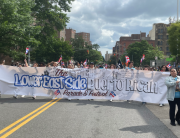Like other social movements, conflicts can emerge within and between LGBT movements, particularly concerning strategies for change and debates over representation. These tensions are also relevant when it comes to transforming education.
There is an ongoing debate about the extent to which lesbians, gays, bisexuals, transgender people, intersex individuals, and others share common interests and need to collaborate. In the past, leaders of the lesbian and gay movement attempted to conceal masculine lesbians, feminine gay men, transgender individuals, and bisexuals, thereby creating internal divisions within LGBT communities. Roffee and Waling (2016) have documented instances of microaggressions, bullying, and anti-social behavior occurring within the LGBT community itself. These conflicts stem from misconceptions and divergent views regarding the meaning of “LGBT.” For instance, transgender people often feel misunderstood by other community members who fail to acknowledge their specific needs, leading to potential health risks. Similarly, bisexual individuals have experienced a lack of understanding and appreciation for their sexuality from lesbian or gay individuals. Despite sharing common values, inconsistencies persist within the LGBT community.
LGBT movements have often embraced an identity politics framework that recognizes gay, bisexual, and transgender people as distinct minority groups. This approach seeks to achieve liberal political goals such as freedom and equal opportunities, aiming to attain mainstream political recognition on par with other societal groups. The LGBT community generally opposes attempts to change the sexual orientation and gender identity of gay, lesbian, and bisexual individuals through practices like “conversion therapy,” which are often rooted in religious beliefs that deem such activities as immoral.
However, some individuals within LGBT movements have criticized identity politics as limited and flawed. Elements of the queer movement, for instance, have challenged the restrictive categorizations of “gay” and “lesbian,” striving to deconstruct these labels that perpetuate a cultural system that inherently marginalizes non-heterosexual individuals.
Historically, the aftermath of the French Revolution coupled with the liberalizing impact of the Napoleonic Code led to the abolition of sodomy laws in Catholic countries with anti-clerical sentiment. In contrast, Protestant countries, where the influence of the church was less severe, did not witness a widespread rejection of religiously inspired statutes. Consequently, many of these countries retained sodomy laws until the late 20th century. Despite progress, some countries still maintain such statutes. For example, in 2008, India’s High Court based its judgment on a 150-year-old interpretation that criminalized sodomy.
Photo by Shingi Rice on Unsplash







Add Comment
You must be logged in to post a comment.